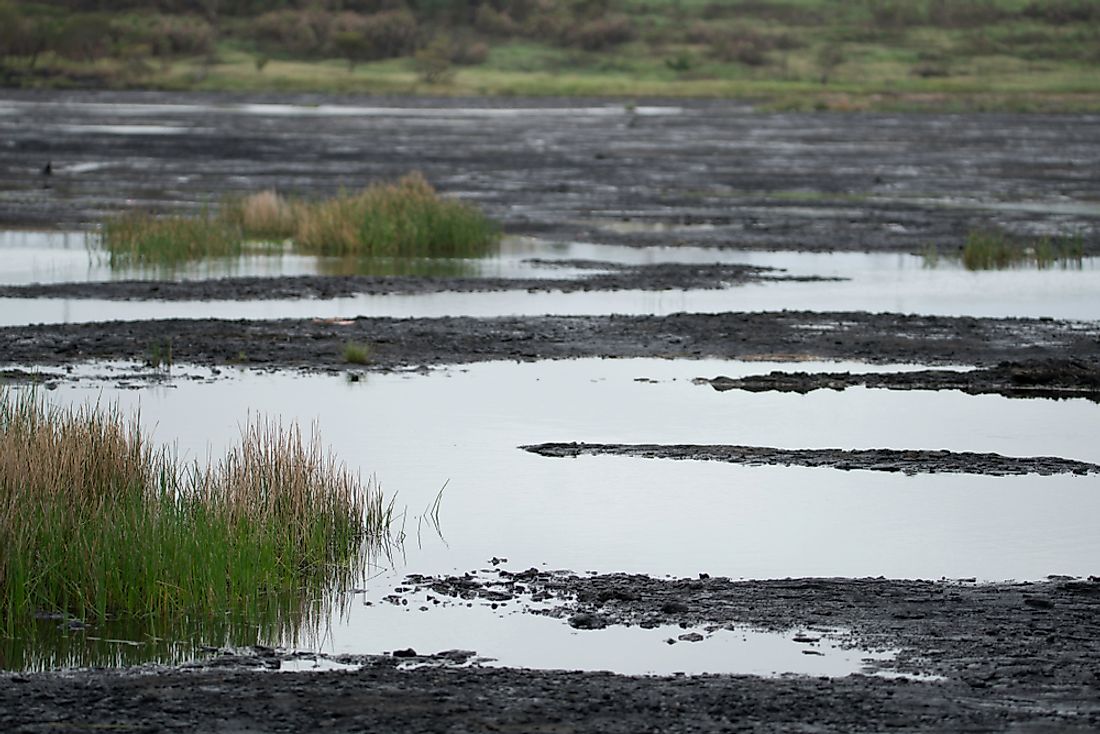What is Special About Pitch Lake in Trinidad?

Pitch Lake is a lake containing natural deposits of asphalt, a form of resin or pitch, which is a mixture of heavy oil left behind after the lighter components have evaporated. Pitch Lake is located in the village of La Brea, Trinidad, one of the major islands of the Caribbean nation of Trinidad and Tobago. It is the largest pitch lake in the world, covering approximately 100 acres. The lake is about 250 ft deep at its deepest point and holds over 10 million tons of pitch. The asphalt liquid is black and viscous, but the surface is semisolid and can sustain significant weight without sinking. This lake is a popular tourist destination, attracting over 20,000 visitors annually, and has facilities such as a museum and offers guided tours. The asphalt is mined by a state-owned company, Lake Asphalt of Trinidad and Tobago.
Formation of Pitch Lake
The origin of the lake is related to deep faults under the Caribbean Plate. Most researchers are of the opinion that the lake is located at the intersection of two faults, which allow the deep oil deposits to be pushed up to the Earth's surface. The lake was formed thousands of years ago through the process of subduction that forced the Caribbean Plate under another plate, leading to the opening of fault lines. The oil that is forced to the surface is collected in a volcanic crater. The lighter elements of the oil are forced by the air to evaporate, leaving behind the heavier components which are a mix of water, oil, and clay. The oil may appear as semisolid on the surface, and some parts can be dense or solid enough to walk on.
Local Legend
The local indigenous population had legends about the lake's origin. It is widely believed that as the indigenous population celebrated a victory over a local rival tribe, they cooked and ate the sacred hummingbird that possessed the soul of their ancestors. According to the legend, the winged God became angry and swallowed the whole village into the lake. The black substance remained as a lasting stain and a remembrance of their sin. This legend was widely believed because several artifacts, including the Amerindian pottery and animal bones, have been discovered in the pitch.
History of Pitch Lake
Pitch Lake was re-discovered by British explorer Walter Raleigh in 1595 during his expedition of the region. However, it was the local population that showed him the lake. Raleigh used some of the asphalt from the lake to caulk his ship since the asphalt could not easily melt. The black substance in the lake had been named "piche" by the locals. Since the re-discovery of the Pitch Lake, significant research and investigation has been conducted on the chemical composition and use of the material. In 1887, American Amzi Barber, commonly referred to "The Asphalt King," acquired a monopoly concession from the British government for the lake. Most of the first roads in Washington and New York in the United States were paved with asphalt from Pitch Lake. Lake Asphalt of Trinidad and Tobago was incorporated in 1978 and currently produces a wide range of products from the asphalt.











